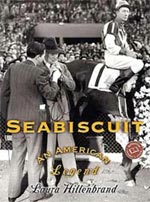
Alexandra the Great
With the running of the 134th Preakness Stakes at Baltimore’s famed Pimlico racetrack this past weekend, the world of thoroughbred racing (and perhaps the general public) seems to have fallen in love with a new heroine. On Saturday, Rachel Alexandra became the first filly in 85 years to beat the boys and win the Preakness, one of the most famous horse races in the world and the middle leg of the elusive Triple Crown. As speculation builds about a possible rematch in the Belmont Stakes between Rachel Alexandra and Mine That Bird, the Kentucky Derby winner she outran down the stretch, sports journalists everywhere have seized on the opportunity to capitalize on public fascination with the world of million dollar horses and the people who own, train, and ride them.
I must confess that I saw the race on YouTube Saturday night, and if Rachel Alexandra does run in the Belmont I might even watch the race live. Yet as remarkable as it is to see a horse race in real time, it is the story behind those few seconds of racing glory that is more remarkable still. And perhaps no one has told that story better than Laura Hildebrand in her remarkable chronicle of a horse no one thought would ever amount to anything: Seabiscuit.

Some seventy-odd years after Seabiscuit’s day, the world is once again in a time of change and uncertainty, and the story of a horse that could win, even when she wasn’t supposed to, has captured the eye and perhaps the heart of the public. Rachel Alexandra is no Seabiscuit, at least not yet, but there are three weeks to go until the running of the Belmont Stakes, which is plenty of time to pick up a copy of Seabiscuit. Sometimes it’s not the just-published new releases that are the best way to start the summer.
